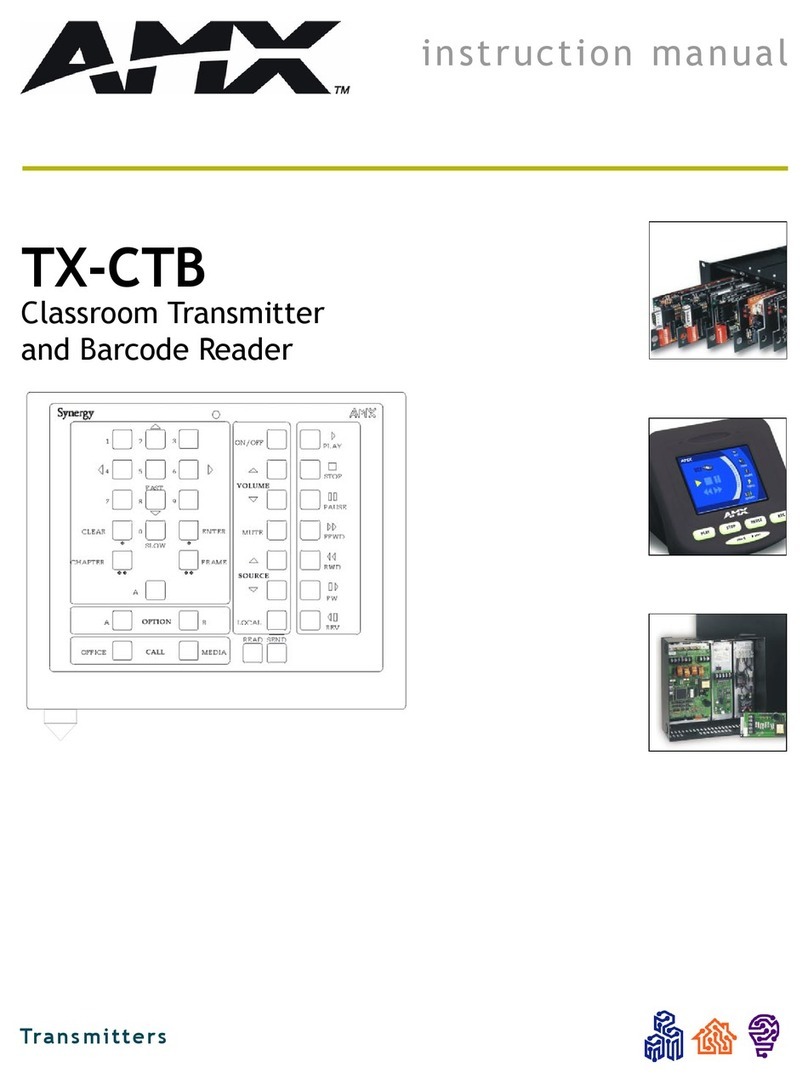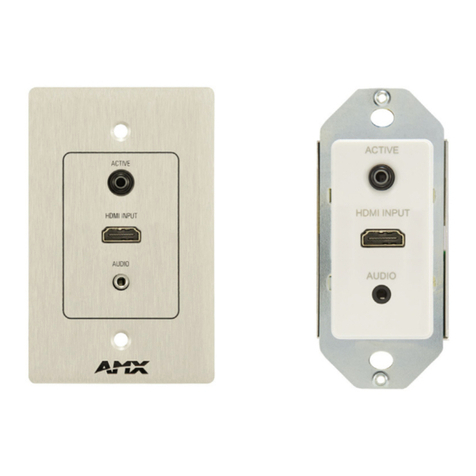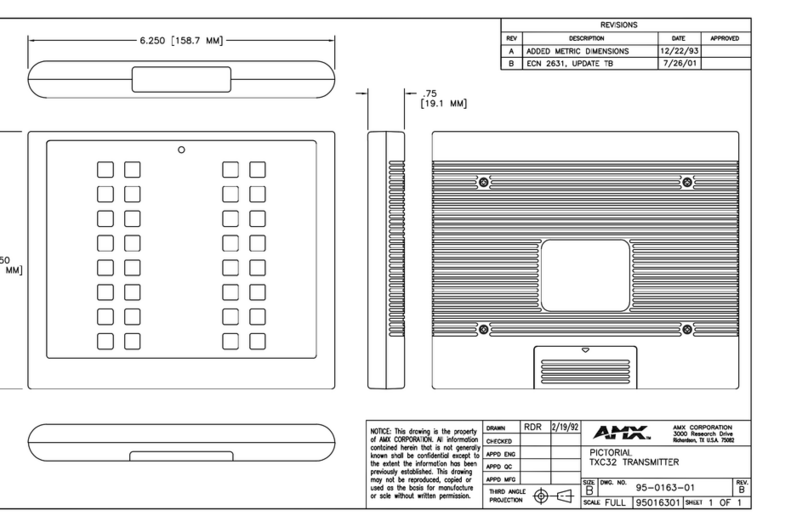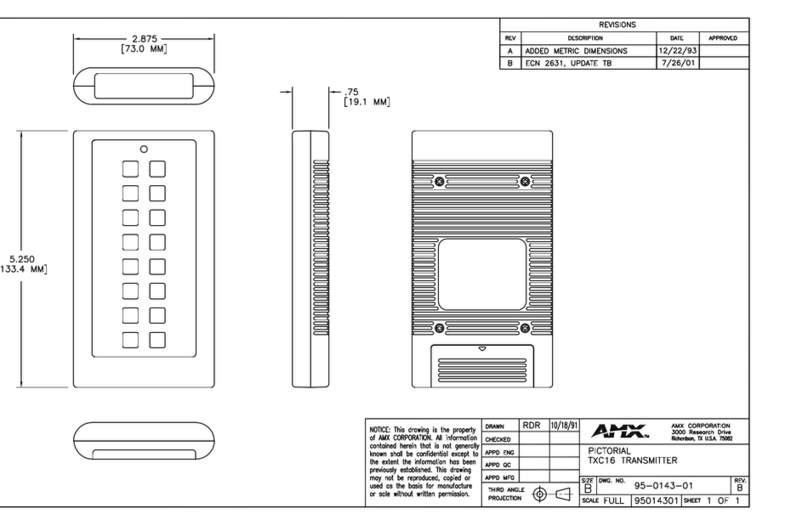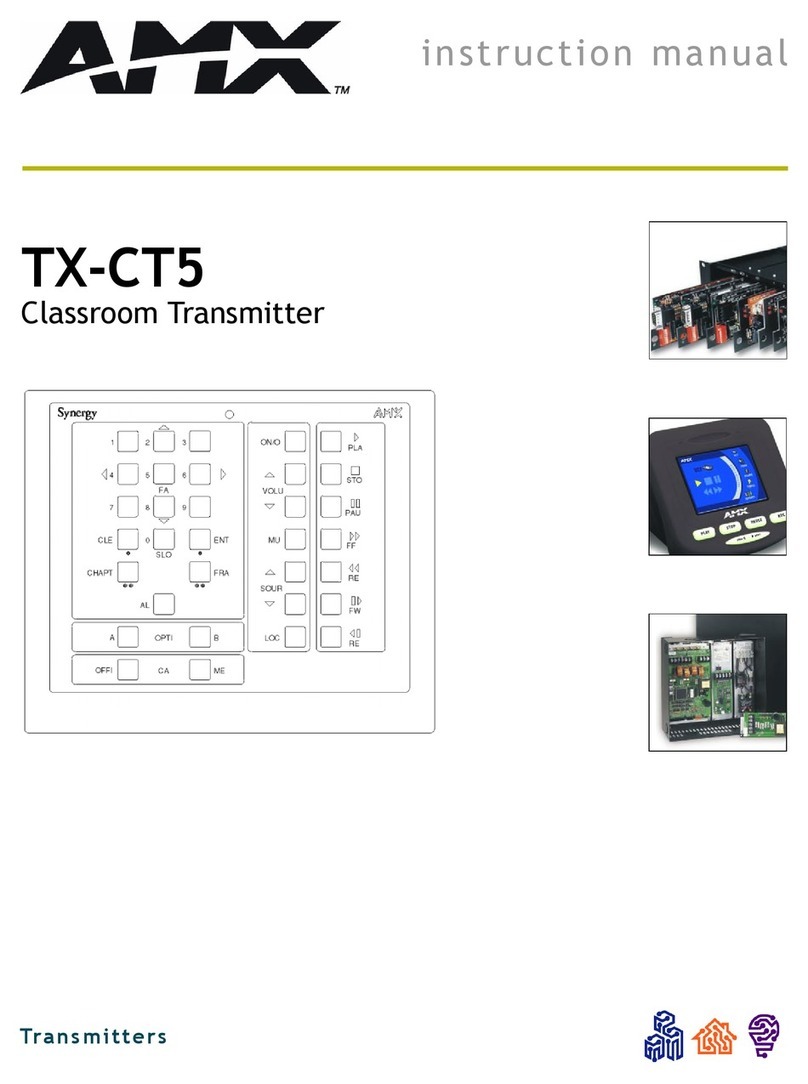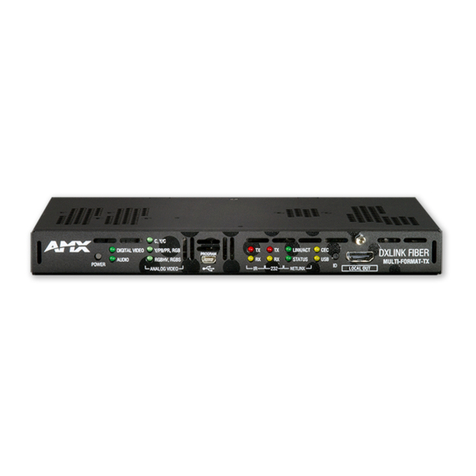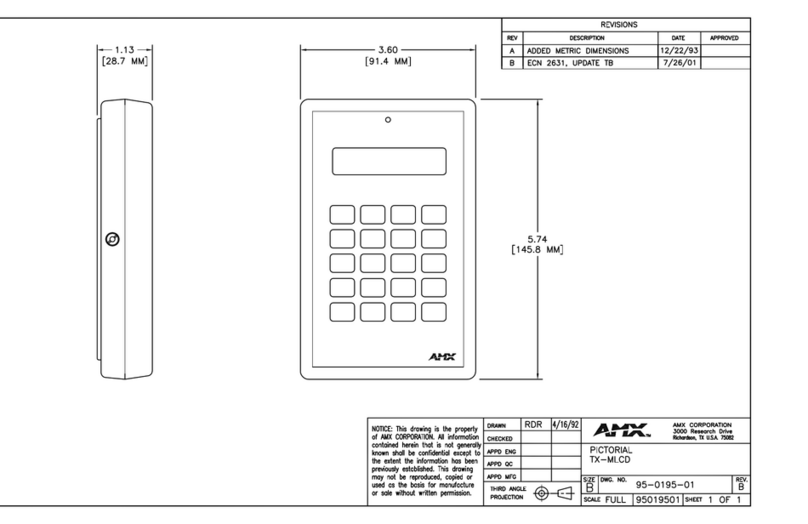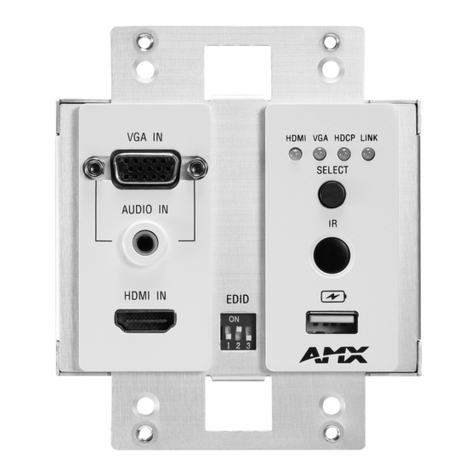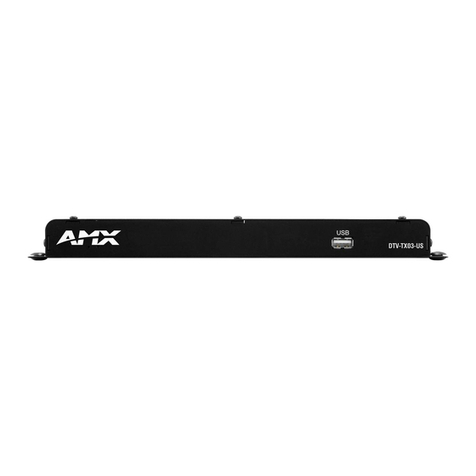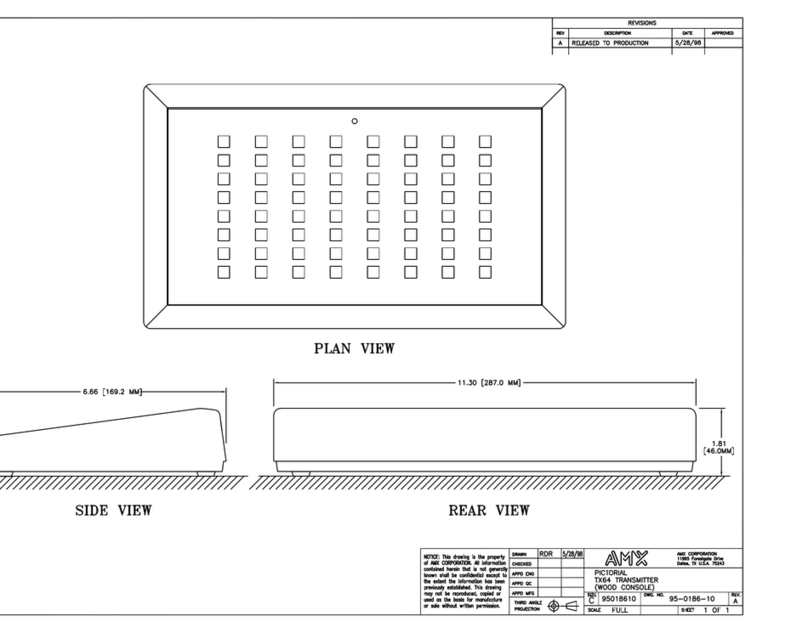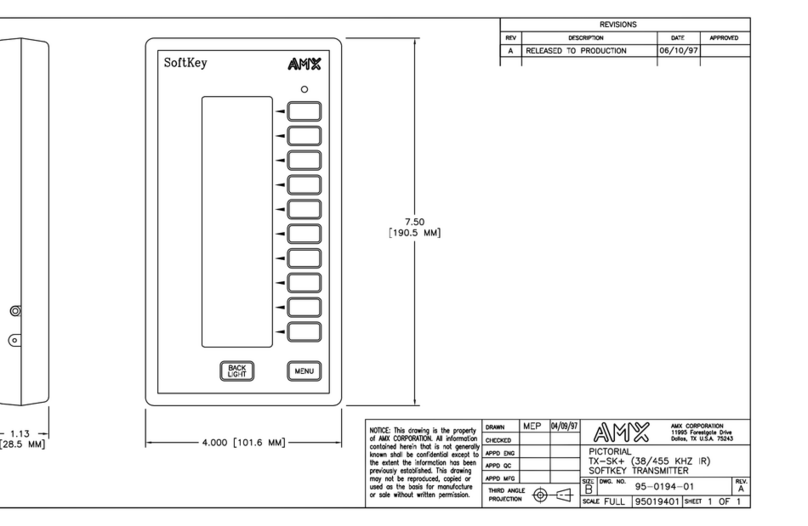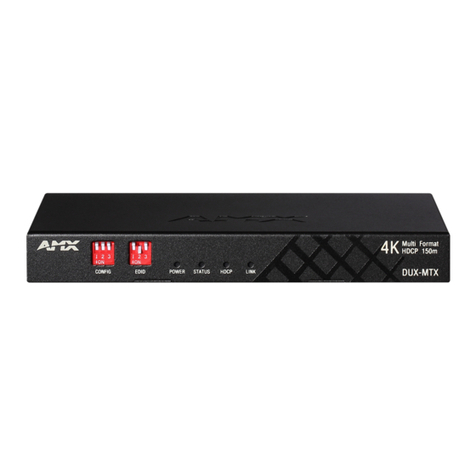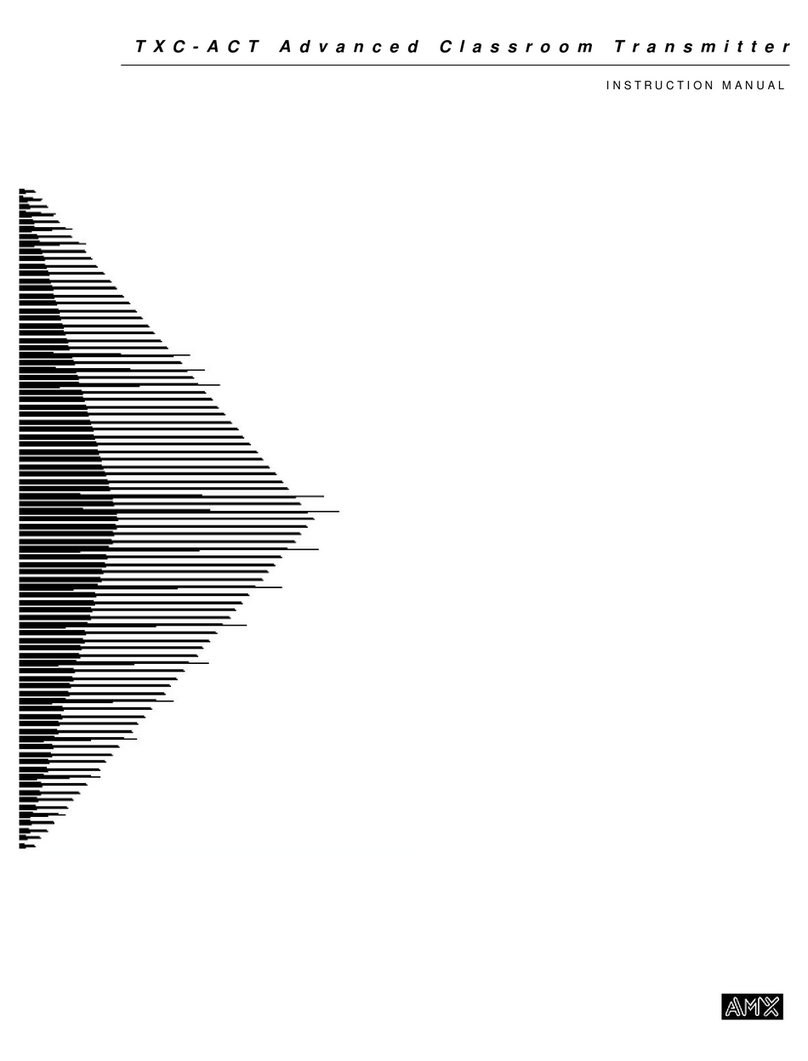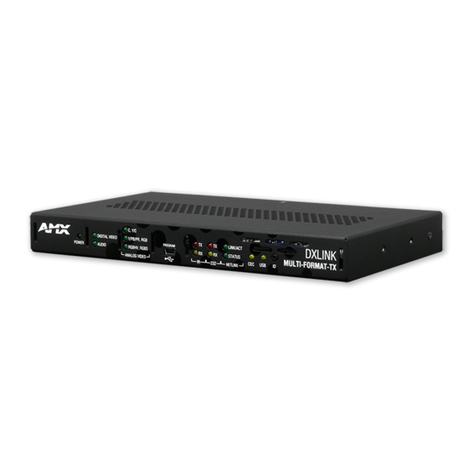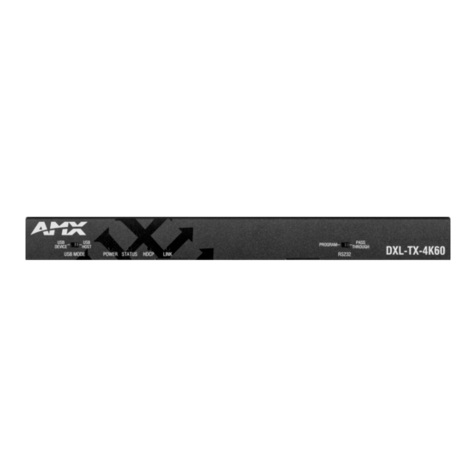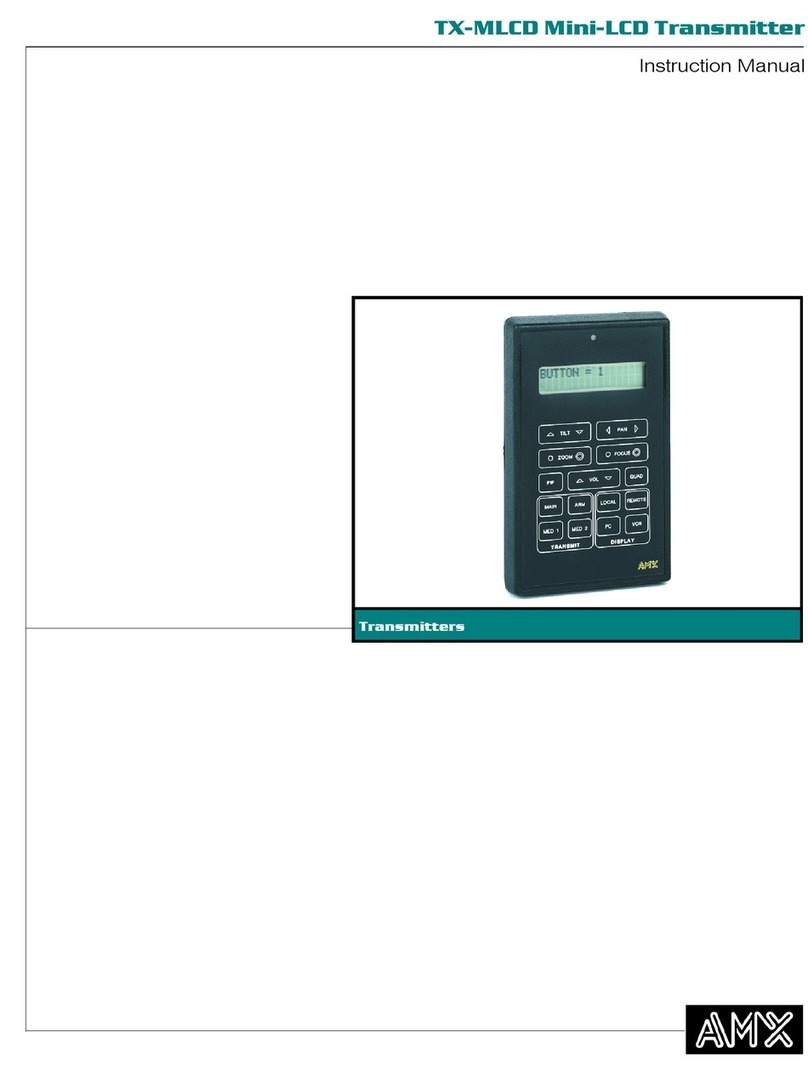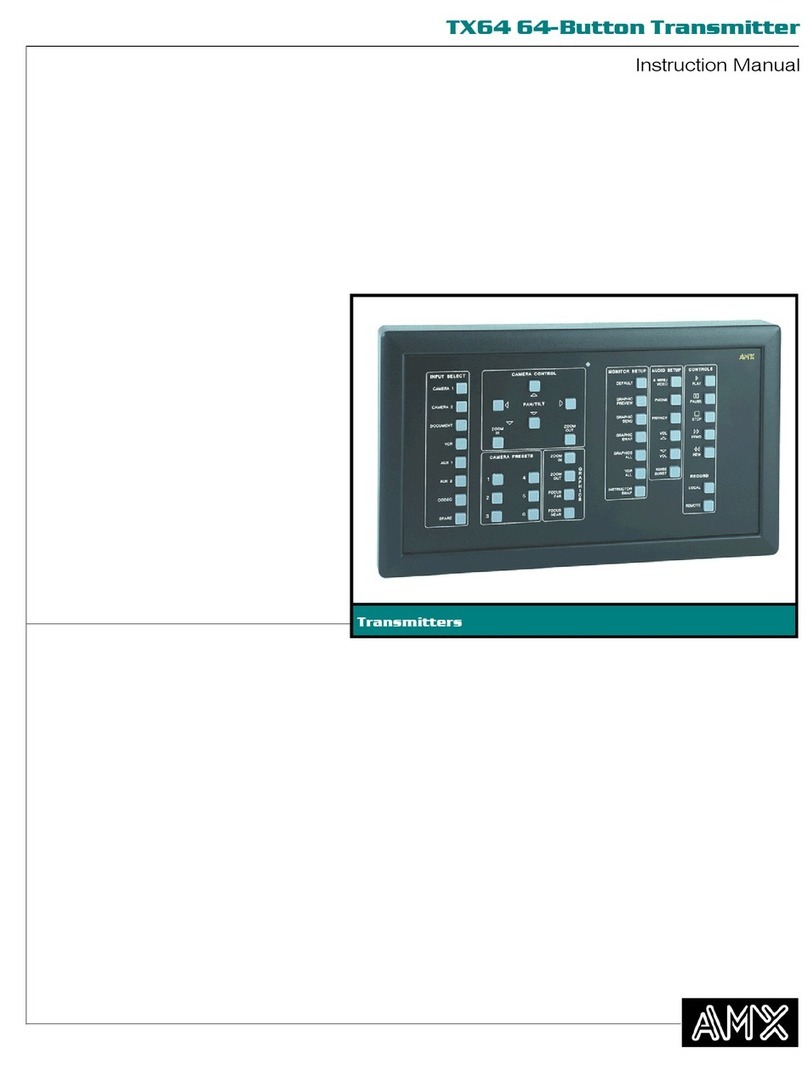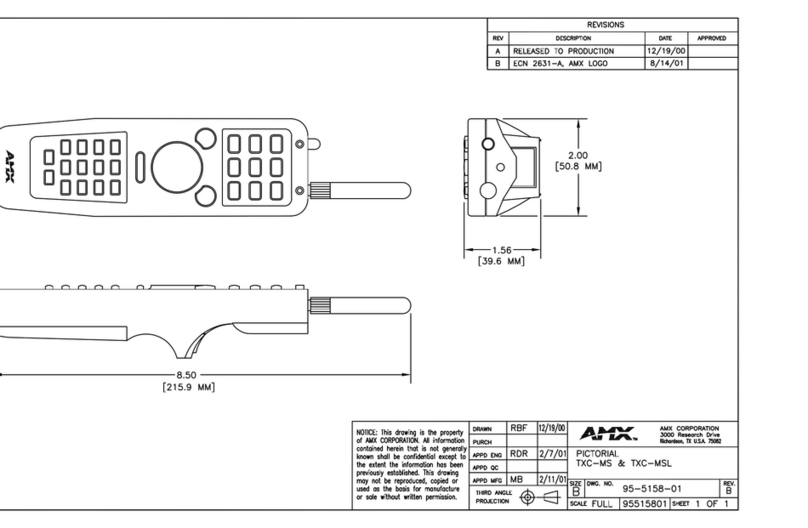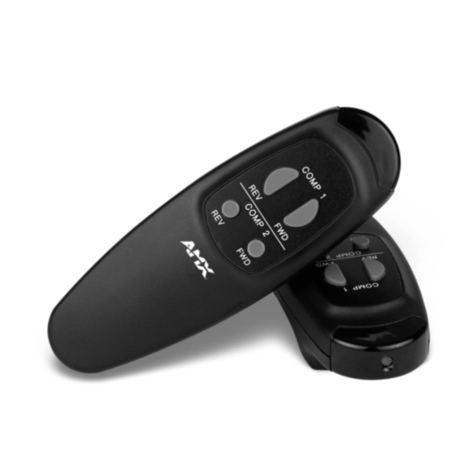
Notices
4DGX Transmitters & Receivers Instruction Manual
Notices
Copyright Notice
AMX© 2013 (Rev D), all rights reserved. No part of this publication may be reproduced, stored
in a retrieval system, or transmitted, in any form or by any means, electronic, mechanical,
photocopying, recording, or otherwise, without the prior written permission of AMX. Copyright
protection claimed extends to AMX hardware and software and includes all forms and matters
copyrightable material and information now allowed by statutory or judicial law or herein after
granted, including without limitation, material generated from the software programs which are
displayed on the screen such as icons, screen display looks, etc. Reproduction or disassembly
of embodied computer programs or algorithms is expressly prohibited.
Liability Notice
No patent liability is assumed with respect to the use of information contained herein.
While every precaution has been taken in the preparation of this publication, AMX assumes no
responsibility for error or omissions. No liability is assumed for damages resulting from the use
of the information contained herein.
Further, this publication and features described herein are subject to change without notice.
US FCC Notice
The United States Federal Communications Commission (in 47CFR 15.838) has specified that
the following notice be brought to the attention of the users of this product.
Federal Communication Commission Radio Frequency Interference Statement:
“This equipment has been tested and found to comply with the limits for a Class A digital
device, pursuant to Part 15 of the FCC Rules. These limits are designed to provide reasonable
protection against harmful interference when the equipment is operated in a commercial
environment. This equipment generates, uses, and can radiate radio frequency energy and, if
not installed and used in accordance with the instruction manual, may cause harmful
interference to radio communications. Operation of this equipment in a residential area is likely
to cause harmful interference in which case the user will be required to correct the interference
at his own expense.
If necessary, the user should consult the dealer or an experienced radio/television technician
for additional suggestions. The user may find the booklet, How to Identify and Resolve Radio-
TV Interference Problems, prepared by the Federal Communications Commission to be
helpful.”
This booklet is available from the U.S. Government Printing Office, Washington, D.C. 20402,
Stock N. 004-000-00345-4.
Use shielded cables. To comply with FCC Class A requirement, all external data interface
cables and adapters must be shielded.
Lithium Batteries Notice
Switzerland requires the following notice for products equipped with lithium batteries. This
notice is not applicable for all AMX equipment.
Upon shipment of the products to Switzerland, the requirements of the most up-to-date Swiss
Ordinance Annex 2.15 of SR 814.81 will be met including provision of the necessary markings,
documents, and annual reports relative to the disposal of the batteries to the Swiss Authorities.


